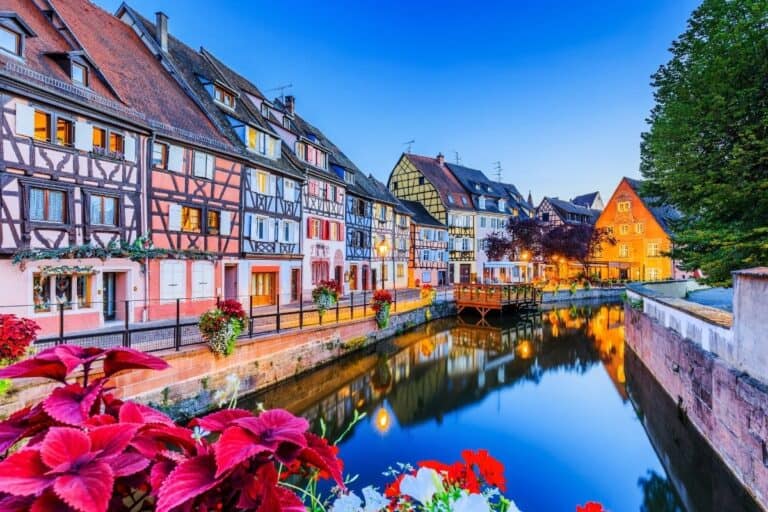
Go World Travel is reader-supported and may earn a commission from purchases made through links in this piece.
Known as France’s Little Venice, Colmar is everything a fairy-tale lover could wish for. This lively town sits between Basel and Strasbourg, in France’s popular Alsace region. With its colorful half-timbered houses and pointed roofs, it seems to be anchored in the past.
Located in the heart of the Upper Rhine Valley, this French jewel retains the beauty of another era. Its old town is perfectly preserved and is continuously crossed by canals.
Being the perfect size to walk through, getting lost in its streets and forgetting the hustle and bustle of the cities is the best way to explore. Furthermore, there are hardly any cars circulating here.
Surrounded by vineyards, Colmar is also part of the famous Alsace wine route and is considered the wine capital of this region. Subsequently, a wine tour is another of the things to do when visiting Little Venice, Colmar.
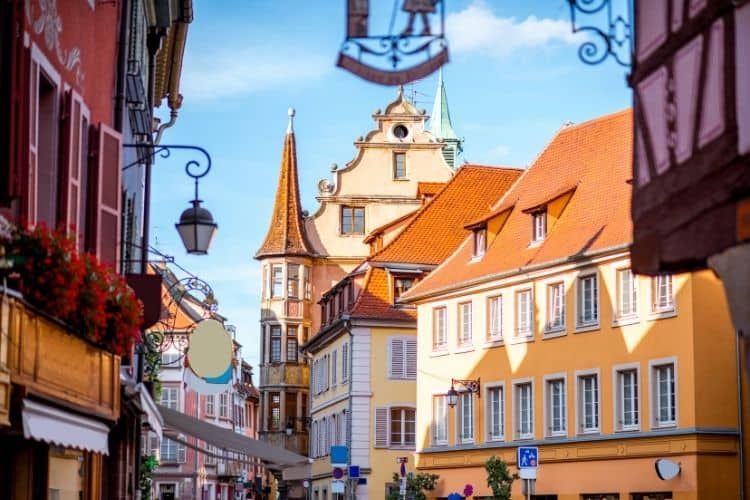
The Imprint of Neighboring Germany
Its numerous bridges and striking houses adorned with flowers are reminiscent of towns in Germany. This is not surprising as it is only about 20 kilometers from the German border.
Alsace is an area that differs from the rest of the country as it has a unique identity within the French territory. This region has a long history of wars and dominions between Germany and France. As a result, it blends with its German neighbors who built most of the buildings in the city.
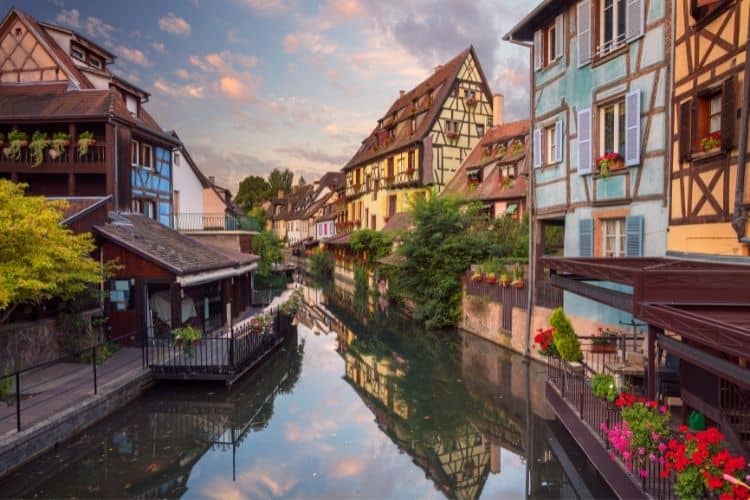
Little Venice, Colmar: A Town of Canals
The name “Little Venice” generally refers to a particular spot in the center. It is an old and picturesque area where the canals that cross the city are concentrated. Here every house has a different color and visitors are immersed in a fairy-tale world.
During the Middle Ages, the river Lauch was redirected to the city center to supply water to the inhabitants. This allowed both houses and businesses in the city access to water. Thus began Colmar’s age of splendor.
In many cases, the colors of the houses in Little Venice Colmar are not a pure coincidence. They were originally painted according to the type of business they ran. For example, blue for fishermen or red for butchers.
To enjoy this magical corner of Colmar you can take a boat ride. It is a half-hour tour of slowly travelling the canals to appreciate the beauty of the place. Another way to enjoy the views is to have a drink in one of the cafes located along the river.
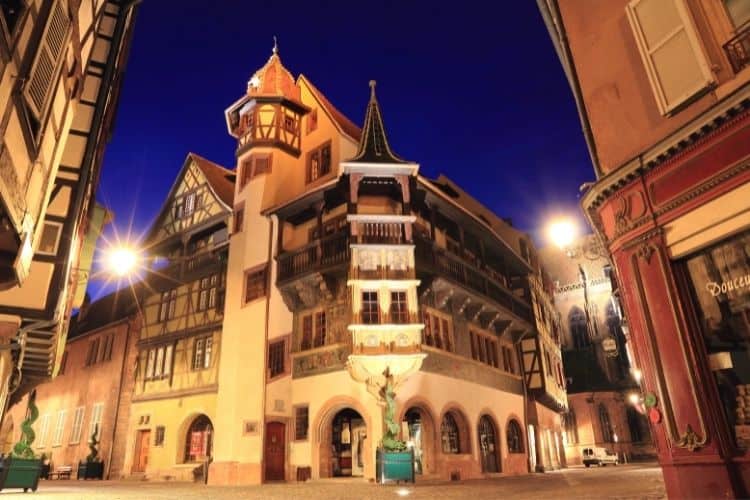
Pfister House: A Sign of the City’s Prosperity
This bourgeois mansion that is Pfister House is the first example of Renaissance architecture in Colmar. It was built in 1537 on rue de Marchands, in the heart of the city. Its name was given three hundred years later when Francois Joseph Pfister became the owner of the house.
It was built as a sign of the prosperity of Colmar’s merchant bourgeoisie. The building was a bold display of wealth and still attracts the attention of travelers today. Many consider it one of the most beautiful buildings in the city.
The striking facade is filled with paintings symbolizing biblical scenes and portraying Germanic emperors. Its wooden gallery and octagonal tower also attract attention. On the first floor, there is a wine store ideal for tasting this famous product of Alsace.
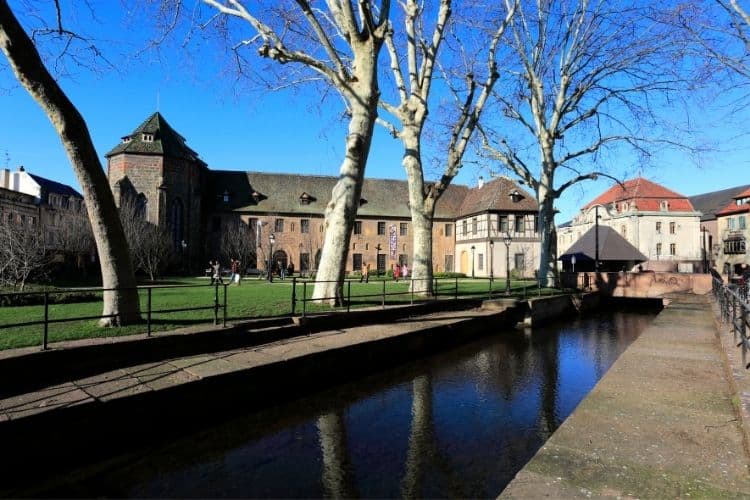
Unterlinden Museum: The Most Famous Museum in Colmar
Another place not to be missed in the city is this museum originally built as a convent for nuns. The building is a work of art, a 13th-century convent with a beautiful cloister surrounding a central garden.
Inside is an extensive and interesting display of art from prehistory to contemporary. The 16th century Isenheim Altarpiece by Matthias Grünewald is the jewel of the crown.
In addition to other masterpieces by this painter, the museum has important pieces by German, Alsatian and Swiss painters of the 15th and 16th centuries.
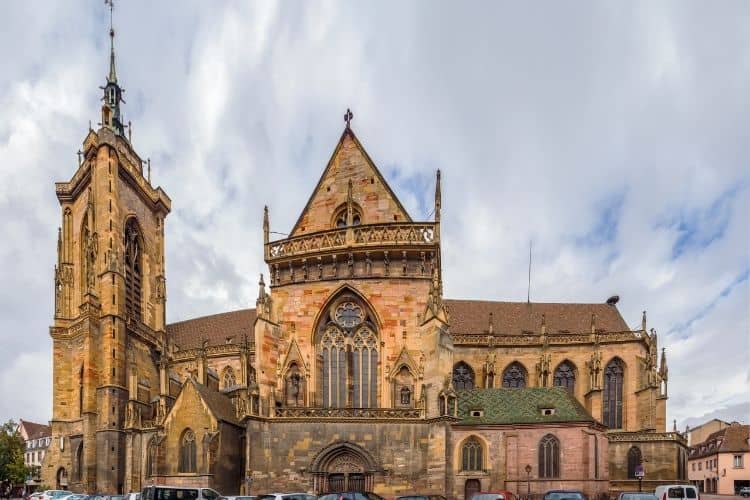
Collegiate Saint Martin’s Church: An Example of the Gothic Style
In memory of the prosperous Middle Ages is the Collegiate Saint Martin’s church, from the 12th century. This religious temple is an example of the importance of the Gothic style in the Alsace region.
The locals consider it the cathedral of Colmar. However, it has not been properly recognized as such by the ecclesiastical authorities.
Located in the popular Place de la Cathedrale, its facade stands out due to its 70-meter-high tower. of Highlights of the interior are the three naves with thirteenth-century stained glass windows, the organ and beautiful side chapels.
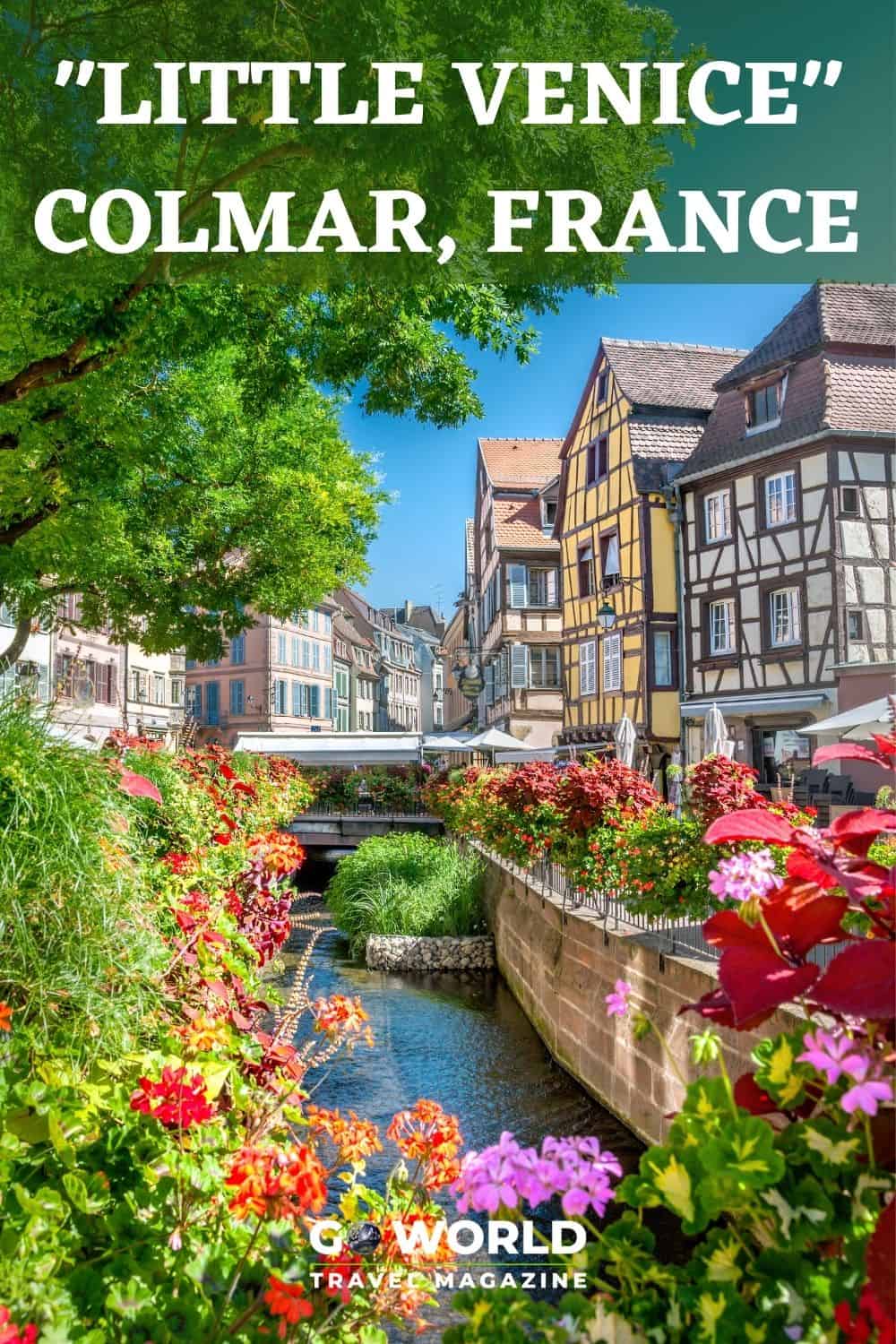
House of Heads: One of the Best Hotels in Little Venice Colmar
This former house from the early 17th century is now one of the best hotels in Little Venice Colmar. It also has a restaurant where you can enjoy delicious regional dishes.
Its name comes from the hundreds of heads and masks that decorate its facade. These small head-shaped sculptures have made it an iconic building of the city, attracting thousands of visitors.
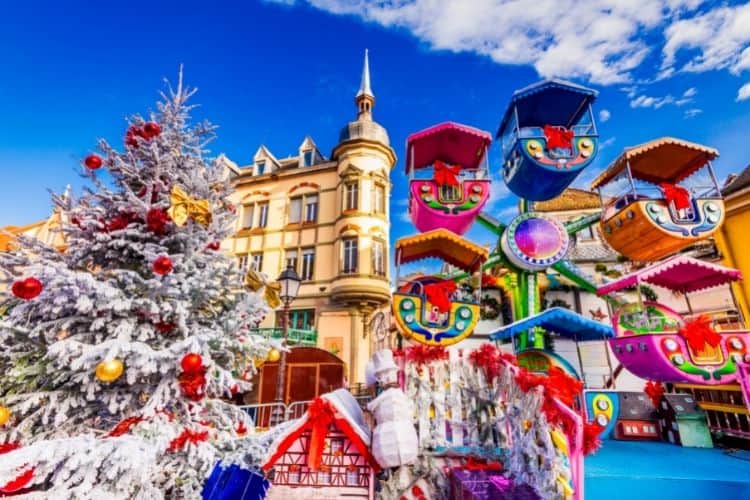
Colmar at Christmas: Simply Magical
When the Christmas season arrives, Colmar is transformed into a scene full of magic. The lights and decorations that dress it from the last week of November until the end of the year create a magical scene.
Streets, stores and homes are illuminated as every year the inhabitants of Colmar participate in a Christmas decoration contest.
Among canals, bridges and alleys, the Christmas markets flood the city and make it a favorite Christmas destination in Europe. In fact, the entire old town becomes a large Alsatian flea market. The market spreads over five different locations.
These are the squares of Dominicains, de l’Ancienne Douane, Jeanne d’Arc, the medieval palace of Koïfhus and Petite Venise. In the stalls you can find everything from handcrafted wooden toys and antiques to sweets, mulled wine and other gastronomic delicacies from Alsace.
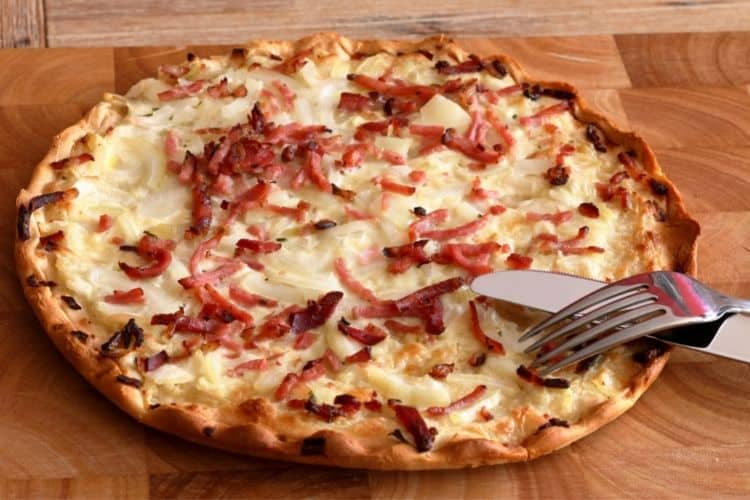
Alsace Gastronomy: A World of Flavors
The German influence is not only palpable in the architecture of the city, but also present in its gastronomy. Dishes like pretzels, sauerkraut or spätzles are found in any restaurant in the city. From French gastronomy, we find foie gras or its famous quiches.
However, the star dish of Alsace is the tarte flambée, also known as flammkuchen. It is made of thin pizza-like dough topped with savory ingredients such as creme fraiche, cheese, bacon or onion.
Another known dish is the röstis which comes from neighboring Switzerland. The dish basically consists of potatoes and baked cheese.
If You Go
- Colmar Alsace France Tourist Office
- Unterlinden Museum
- La Maison des Têtes Colmar | 5-star luxury hotel Alsace | Official (maisondestetes.com)
- Colmar, the magic of Christmas | Christmas in Alsace
Inspire your next adventure with our articles below:
Author Bio: Based in France, Lucia Otero Medraño is Spanish with a master’s degree in travel journalism. She has worked in the tourism sector but her true passion is to live enriching experiences and discover amazing places around the world and write about them. In her spare time, she likes to enjoy her second passion, music.

